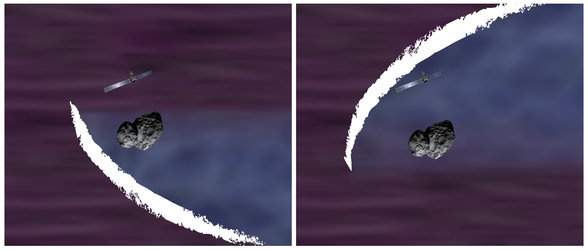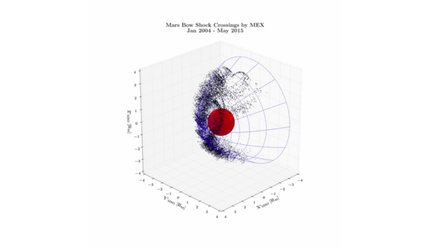

The moving Martian Bow Shock
An analysis of more than five Martian years of measurements from Mars Express has shown that the location of the bow shock – the boundary where the solar wind slows suddenly as it begins to plough into the planet's outer atmosphere – varies according to the position of Mars in its orbit. This is in addition to other factors such as the dynamic pressure of the solar wind, and the amount of extreme ultraviolet solar radiation.
On average, the bow shock is closer to Mars near aphelion (the planet's furthest point from the Sun), and further away from Mars near perihelion (the planet's closest point to the Sun).
The bow shock's average distance from Mars, when measured from above the terminator (the day-night boundary) reaches a minimum of 8102 km around aphelion, while its maximum distance of 8984 km occurs around perihelion. This is an overall variation of approximately 11% during each Martian orbit.
The orange glow indicates the extent of the Martian exosphere – the outermost layer of the atmosphere, where gaseous atoms and molecules escape into space and interact directly with the solar wind.
The study used data from the Analyser of Space Plasma and EneRgetic Atoms (ASPERA-3) Electron Spectrometer (ELS).





